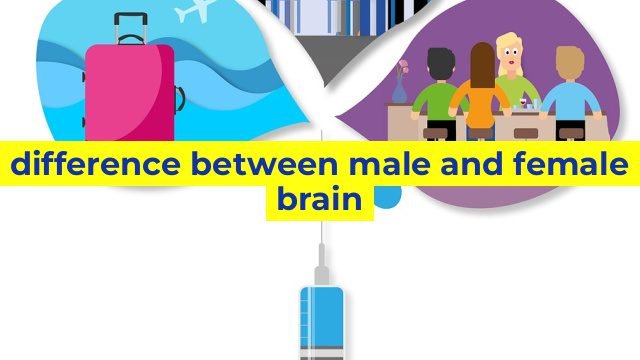The Differences Between Male and Female Brain: Understanding Neurological Gender Differences
The human brain is a fascinating and complex structure, yet not all brains are the same. While males and females share similarities in terms of cognitive abilities, there are also notable differences between the two sexes. This article will explore the differences between male and female brains to help you understand the neurological gender differences.
The Physical Differences in Male and Female Brains
Studies have shown that there are physical differences between male and female brains. Firstly, male brains tend to be larger than female brains due to their larger body size. However, size isn’t everything. The left hemisphere of male brains is usually larger than the right, while the opposite is true for female brains.
Additionally, the communication pathway between the two hemispheres of the brain (known as the corpus callosum) is usually thicker in females than in males. This gives women an advantage in terms of communication and multitasking abilities. Meanwhile, men tend to have a thicker amygdala, responsible for emotions such as fear and aggression, which could explain their tendency for risk-taking behaviors.
The Cognitive Differences Between Male and Female Brains
The physical differences in male and female brains have been linked to different cognitive abilities. For instance, women tend to have better verbal abilities and have been traditionally strong in language-based communication. Men, on the other hand, have stronger spatial abilities, allowing them to better navigate their environment and manage physical tasks.
Additionally, women tend to have stronger emotional intelligence and empathy, whereas men are more attracted to competition and are goal-oriented. As a result, these differences can see women work better in teamwork, while men tend to work better individually or in a hierarchical work environment.
The Implications of Male and Female Brain Differences
Understanding the neurological gender differences can help us make better decisions in our personal and professional lives. For example, limiting gender stereotypes that might suggest women are weaker in math or men are unable to communicate emotions. Additionally, acknowledging these differences can drive more effective campaigns and marketing strategies that are tailored to male- or female-focused audiences.
Moreover, considering these differences in education can ensure equal opportunities for both sexes, by presenting information or teaching styles that accommodate gender differences in learning. This can have a meaningful impact on addressing gender gaps in areas such as the sciences, where males may prefer visual and spatial learning styles, and females may prefer language-based tasks and communication.
Conclusion
While male and female brains may differ in terms of physical structure and cognitive function, it is crucial to acknowledge that individuals are unique, and not all male or female brains are the same. Rather, by recognizing these neurological gender differences, we can better understand and appreciate the diversity in how individuals think, process, and approach the world around us. This can ultimately lead to better collaboration, appreciation, and support for each other.
Table difference between male and female brain
Difference between male and female brain
| Category | Male Brain | Female Brain |
|---|---|---|
| Size | 10% larger | 10% smaller |
| Lateralization | More lateralized, with greater left hemisphere activation | Less lateralized, with more bilateral activation |
| Communication | More focused on systemizing and logical thinking | More focused on empathizing and social skills |
| Emotions | May have difficulty expressing emotions | May have higher emotional intelligence and better communication skills |
| Language | May have better spatial and mathematical skills | May have better language and verbal skills |
| Movement | May be better at spatial orientation and motor skills | May be better at fine motor skills and balance |

